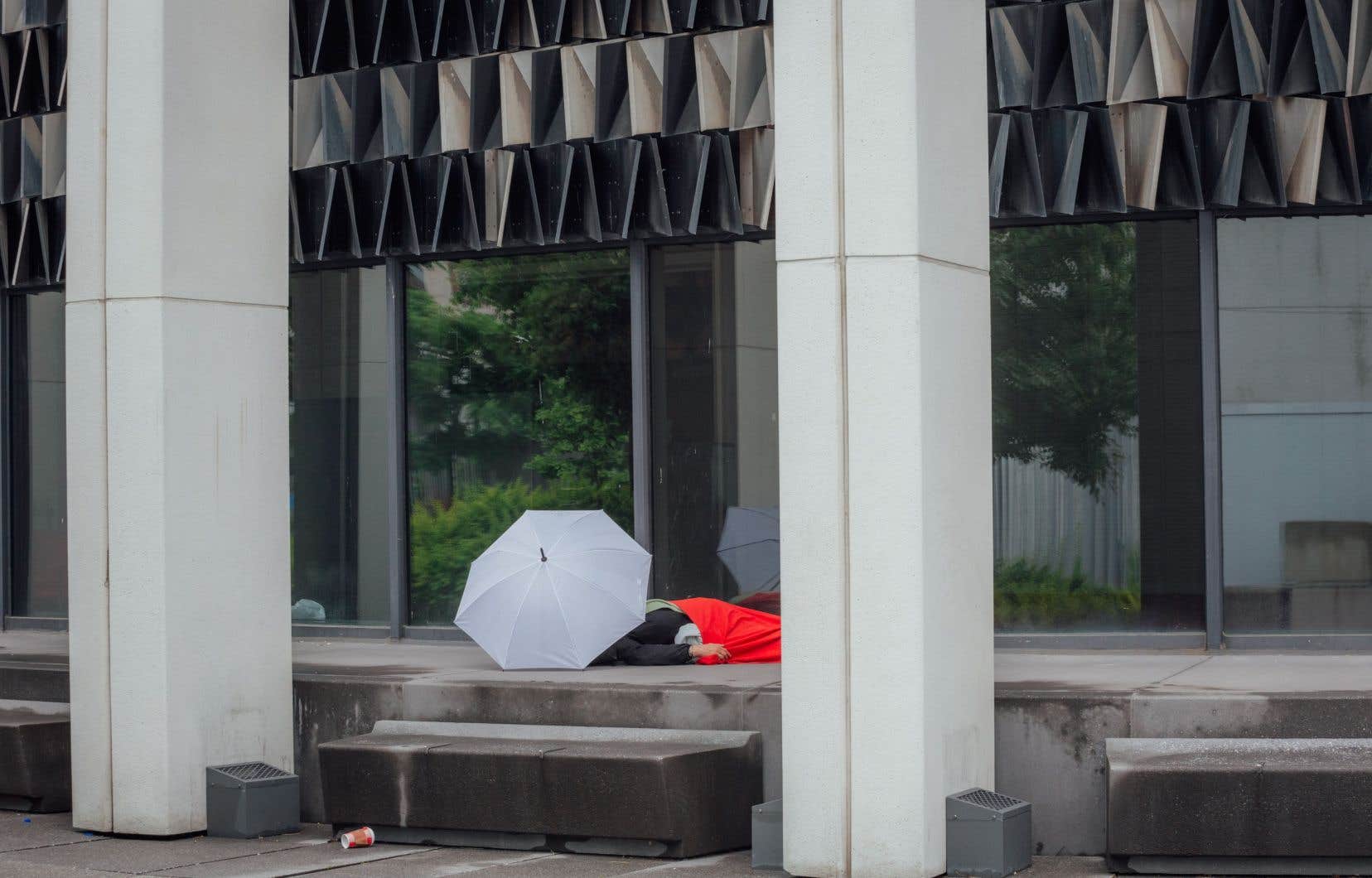This second and final text in a series on homelessness and culture recalls how development through festivals has pushed Montreal’s homeless to the eastern part of the city center.
Culture and homelessness don’t necessarily coexist very well. Even more disturbing: the sports or cultural festival industries which are starting to operate at full speed again at the moment in Quebec, and in Montreal in particular, can partly explain the sad fate reserved for the homeless.
This is one of the disturbing observations made by the sociologist Michel Parazelli in his great synthesis entitled Homelessness and cohabitation urban (PUQ), published in 2021.
The survey shows that the way of considering homelessness depends in part on the economic regime guiding urban development in a context of international competition between cities. In the case of Montreal, for example, a good part of this “branded” attractiveness comes through cultural and sports tourism, festivals and especially the Quartier des spectacles (QDS), inaugurated in 2009 largely to accommodate them in the center. city.
“From then on, a whole series of dissuasive and socio-sanitary intervention measures will be put in place to contain the potential nuisance of people in situations of marginality in public spaces programmed by the [QDS] », writes Michel Parazelli, from UQAM, recalling in particular the concomitant formation of the Public Spaces Brigade to “promote harmonious cohabitation” in public spaces.
The choice of urban development by the festival can also be linked to the adoption of an urban plan for the metropolis years earlier. The proposal was based on the idea of industrializing the products and entertainment offerings of the former Red Light of the open city frequented for its wild nights since at least American Prohibition. This sulphurous reputation of Montreal was celebrated even in the play Sex, by Mae West.
“The structural issues that could influence the representations of the homeless are linked to the economic regime that guides urban development,” explains Michel Parazelli in an interview. The objective, within the framework of international free trade, is to develop greater attractiveness of cities. They are in a market, a competition, to attract capital. Montreal has focused on festivals as one of its market segments. People previously perceived as extremely poor marginalized people suddenly began to cause more disruption because they became a socio-symbolic obstacle to development. Tolerance towards them has therefore changed. »
The same causes produce the same effects almost everywhere. The Olympic Games always aggravate exclusion under the guise of “social marketing” in a Potemkin village logic. The proof was made in Montreal in 1976 (with the dismantling of Corridart), as in Vancouver in 2010. It is visible again in Paris, where a new tourist-sporting orgy is being prepared. The Le Reverse de la Medal collective, which brings together 80 French and international NGOs, denounced the urban “cleaning” of the Paris region. The supposedly “most inclusive Games in history” actually resulted in the displacement of thousands of homeless people from the capital.
Three imaginations
The media, these central players in culture and communications, also help to forge a vision of homelessness. Michel Parazelli was interested in the “social imaginaries” which shape media discourses on this world. With Marie-Ève Carpentier, he dissected and classified 390 newspaper articles published on the subject over 25 years (1993-2018).
“We used the media a bit as samples of social discourse, the one that also circulates in cultural productions,” says the professor. The media offer a reading of reality that is not homogeneous. »
Three imaginations, relaying theories and experiences, emerge and “are still relevant today”.
The first angle, called ecosanitary, defends a naturalist vision of the occupation of urban territory. The homeless are seen as a nuisance to the so-called “natural” balance of the city, its fragile ecosystem. It is seen as an obstacle to prosperity, development and success. The resulting repressive actions seek to make homeless people invisible or bring them into line through judicialization and repression. This is the imagination at work in pure sugar in the QDS and at the moment in Paris.
The second imaginary, called democratic, is opposed to health. It postulates a citizen occupation of public space and defends actions to support victims of discrimination. This perspective leads in particular to demands for the right to shelter. The Housing First approach, popular in North America and in Montreal, has now gained the support of certain community organizations, shelters and the business community grouped since 2015 within the Movement to End Homelessness in Montreal.
The third axis is described as beneficial. He seems to be making progress at the moment. It bases the representation on the helplessness of the homeless, who must be helped by making them responsible, by reintegrating them into the system to save them. The speech is pragmatic and aims to get off the streets.
However, in reality, putting an end to homelessness seems less and less possible in the current socio-economic regime. The federal government has stopped subsidizing social housing since the 1990s. The provinces have not compensated sufficiently. We therefore find ourselves with this crisis of multifactorial homelessness and the opioid crisis which adds to it. In addition, the social and health services network has reduced access to all kinds of resources.
“People experiencing homelessness are not organized to speak out collectively,” says Michel Parazelli in conclusion. We do it with young people, women, people living with disabilities or mental health. We don’t do it with the homeless. Yes, from time to time, we consult a few, but no organization is there to discuss the solutions imposed on them by other social actors. »
